A note from Brett Jones, Chief SFG:
I have been learning from Pavel since 2002 and teaching with him since 2003. His system has never been kettlebell-only or StrongOnly—it is StrongFirst. I have been recommending pairing Ground Force Method (GFM) training with the StrongFirst methodology since 2015.
Based on FMS principles, GFM is a system that provides great variation in movement and is a gym-friendly way to move through many postures and positions. Plus, it is fun and encourages play. Keep reading for a full explanation of GFM from founder Peter Lakatos, as well as his thoughts on how you can begin incorporating it today. And remember, StrongFirst has never been just kettlebells.
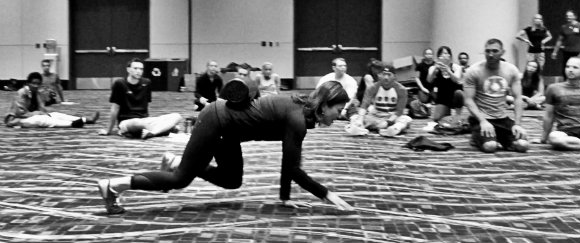
What is Ground Force Method? When I hear that question, I have two answers, the short one and long one—“the elevator speech” and “the origin speech.”
The Elevator Speech
Ground Force Method (GFM) is a movement system where the focus is on the quality of your movement. We believe that before you move more, move stronger, or move faster, moving better should be the goal.
If you don’t move well, you are putting your fitness, skill, and strength practice on top of a faulty foundation. Thus, inefficiency and potentially breaking becomes easier. GFM is all about helping to create a solid movement foundation that will allow you to do life better.
If a slightly longer explanation is needed, you can add that we have used knowledge from Gray Cook and Lee Burton, Stuart Brown, Mihaly Csikszentmihalyi, Istvan Balyi, Eyal Yanilov, Pavel Tsatsouline, and many others. GFM is about movement hierarchy—hence the slogan: movement from the ground up.
Quality of movement and the incorporation of play and flow are foundational to GFM. But also important is the practice of strength, power, endurance, coordination, flexibility, and agility.
A visual guide looks like this:
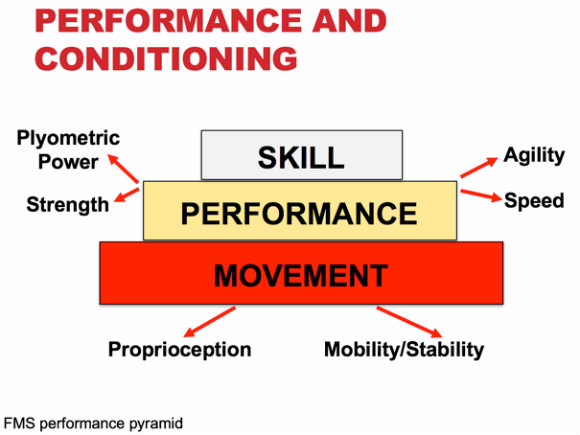
In the FMS performance pyramid above, GFM is part of the foundation of the pyramid—the movement base. In our case, it is a strong and wide foundation, a foundation that creates stability for all of the components of the higher-level skills.
The Origin Story
The long story, the GFM origin story, starts with me, but includes our team.
I was born in 1970 and have been an athlete since the age of five and a coach since 1990. I teach FMS and StrongFirst Certifications all over the world. I am an Expert Level 3 in Krav Maga and a brown belt with four stripes in Carlson Gracie Brazilian Jiu Jitsu. This short biography is not to show off what I have accomplished, but rather to illustrate that these decades of experience in training and teaching helped me realize two things:
- How much I don’t know yet.
- How much quality should be present before quantity.
Ground Force Method is the product of the passion, knowledge, and frustration of our excellent team of instructors. The frustration was seeing great athletes breaking down and getting injured, along with athletes that no longer found fun and passion in their training.
While in no way do we claim that GFM makes you injury free or bulletproof, common sense tells you that when you move better, you have a better foundation for most anything. When we see current generations “hitting the gym,” it is noticeable how their movement literacy is missing or compromised. Their fundamental movement patterns are lacking.
This is where the passion and the knowledge came in—our team created a system for any level of ability, a system that teaches and enhances movement literacy, once again bringing the joy of movement and skilled training back to athletes of all ages and abilities.
GFM is scalable and creates “professional movers”—movers that are ready to receive physical input while having lower risk of injury and greater ability.
The goal for any training in some degree or another is to create reserves. Reserves for any given sport or event, or even for life. Ground Force Method creates movement reserves because when you practice moving well, and you move well often, you are moving and training with much more capacity to train, play, and flow.
How Can You Start Using GFM in Your Training?
Begin by using the Ground Force Exploration (GFE) as movement preparation and feedback system.
Learning the GFE helps the instructor and the student create a standardized warm-up before any type of training. The GFE not only addresses the main components of a good neurologically driven warm-up for students, but the instructor as well as the student receives real-time feedback on the quality and capacity of the student’s movement. That real-time and immediate information can change the planned training or show the need for additional movement preparation or correctives for better movement, stability, or mobility.
Performing the GFE backward at the end of the training session not only warms down the athlete, but also gives useful information on how the training session affected the athlete. Did movement degrade or get better? The GFE is an easy way to answer that question, for yourself, and as an instructor.
For beginners:
Use the GFE as warm-up and warm-down. Building movement literacy while having fun and working into the flow state is the goal. This is what makes people want to perform any activity more than once.
The flow itself in this set-up is an ultimate work-capacity builder. In the flow state, you are able to do more because time becomes secondary to the drive to move, to move well, and to string any number of movements together in a sequence.
For advanced athletes:
Use the GFE as warm-up and warm-down and add different speeds, reverses, and static holds. Being able to create and train GFM and achieving the flow state brings movement creativity and enjoyment for the advanced student.
In addition, the ability to use GFM for deloading periods at the end of training blocks (deloading periods should be mandatory, and should be programmed) not only helps the athlete recover from the past training block, but because GFM is all about foundational movements, it helps the athlete get ready for the next training block. Nothing is better than when you get ready for the next challenge by focusing on better movement.
Try Ground Force Method for 2 Weeks
As an instructor, or as a student, try incorporating the GFE in your coaching, training, and/or movement practice for two weeks.
As you are performing the GFE as warm-up, check-in with yourself or notice how your students are moving and feeling. During your training session (kettlebells or any other training application), see how differently your session goes and what changes while you’re training. After your session, use the GFE backward as a warm-down. Once again, check in and see how things are feeling and if your movement ability and capacity has altered.
After you do this for two weeks, let us know what happened. We think you will see and feel a difference and we want to hear about it. You can post to the comments below, comment on our Facebook, or send us an email to info@groundforcemethod.com. If your experience with the GFE sparks a desire to learn more, you can investigate our Certifications.
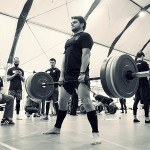
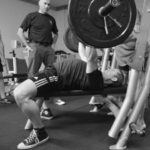
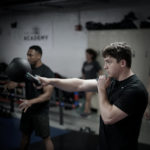
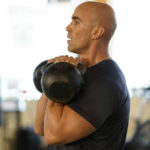

Awesome article and GREAT video! Being 60 functional movement does suffer, plus this video shows it can put a little more fun in your (my) warmups & cooldowns.
Thank you very much!
Dear Peter,
I tried the routine shown above two times and just wanted to let you know, that it made me immediately … just … feeling better! I can’t put it differently… just overall better…I’m really surprised!And I feel better, although I clearly have difficulties with regard to mobility in my hip joints and, in the last degrees, hamstring flexibility, while doing the movements, along with some mild pain in the lower back …. but, I repeat, I feel MUCH better.
greetings Johann
Great piece and an excellent instructional video. My son and I will use this as our warm-up to training starting tomorrow. I look forward to eventually teaching it to clients after I develop facility with it. Thanks, Peter and Andrea.